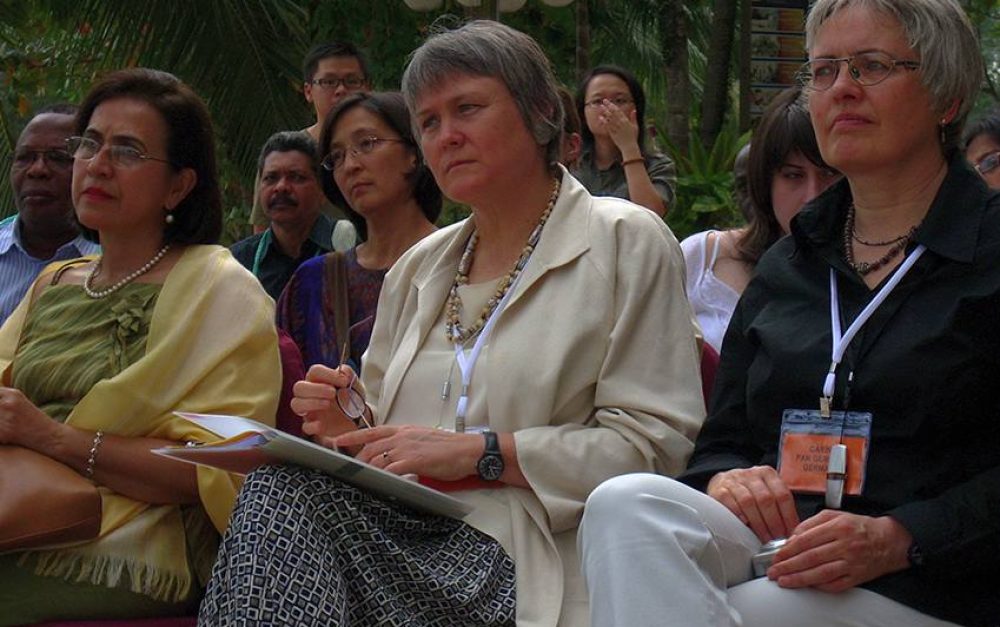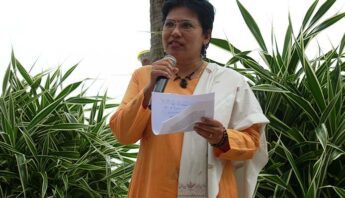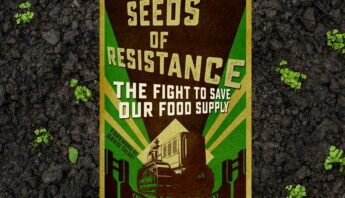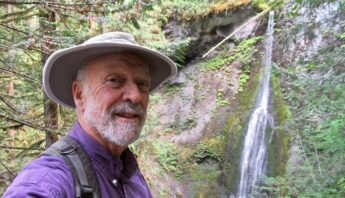To kick off our series of staff and supporter profiles for PAN’s 35th anniversary, Executive Director Kristin Schafer recently had a conversation with PAN North America’s founding director — and her longtime mentor — Monica Moore.
To kick off our series of staff and supporter profiles for PAN’s 35th anniversary, Executive Director Kristin Schafer recently had a conversation with PAN North America’s founding director — and her longtime mentor — Monica Moore.
You were involved with PAN before it was officially founded as an organization. What brought people together to form a global network?
PAN was sparked by the book Circle of Poison: Pesticides and People in a Hungry World, which documented how pesticides that had been banned for health and environmental reasons in northern countries were still produced and exported to developing countries. The banned pesticides were causing tremendous damage in those countries, and were also re-imported back to their home countries as food residues. Since pests became resistant and the pesticides lost their effect over time, the circle became a widening spiral.
There were three key elements. First, the toxicity of these pesticides caused incredible damage to people and the environment. Second, exporting toxic chemicals from richer, more powerful countries to less powerful ones with no notice or regulation was an extreme injustice. And third, there are better ways to control pests – pesticide dependence displaces and blocks out much better ways of farming. Since no one group or country could change this on their own, the book urged people working on these issues to start linking up and working together. Ultimately that suggestion led to PAN. Over the years, the scope of issues grew as we learned more, but that was the start.
How did you personally first get involved?
I was living in southern Brazil when Circle of Poison came out, volunteering with organizations working on environmental and agricultural issues, Indigenous peoples’ rights, and women’s issues. I was surprised to find they were all working together on pesticide-related issues, and began learning about all the linkages. When Food First sent copies of the book to these groups, I helped them document damages caused by imported pesticides in Brazil and push for changes — that’s how I got involved in pesticide issues. When I returned to the Bay Area, I linked up with the book’s authors at the Center for Investigative Reporting, amazing activists at Food First and Friends of the Earth, and some other key folks to catalyze the founding meeting of PAN in Malaysia in 1982.
You established the North America office two years after the global network was founded. What were some of the challenges you faced in those early years?
After PAN was founded, the Bay Area groups continued to provide space and other support to the all-volunteer PAN North America focal point, and we met every couple of weeks at cafes and potlucks. But when the international network decided to launch the international Dirty Dozen campaign and asked us to prepare materials and coordinate the launch, we didn’t have the capacity to do this on a volunteer basis. When I asked Anwar Fazal, then the President of the International Consumers Union (IOCU, which co-hosted the PAN founding meeting), if IOCU could coordinate it, he encouraged us to set up an organization in North America and work with PAN for the long haul. Anwar had recently won the Right Livelihood award, and sent us part of his award money as a founding grant. It was both an honor and a challenge, and we incorporated as the Pesticide Education Action Project, which eventually became the PAN North America Regional Center.
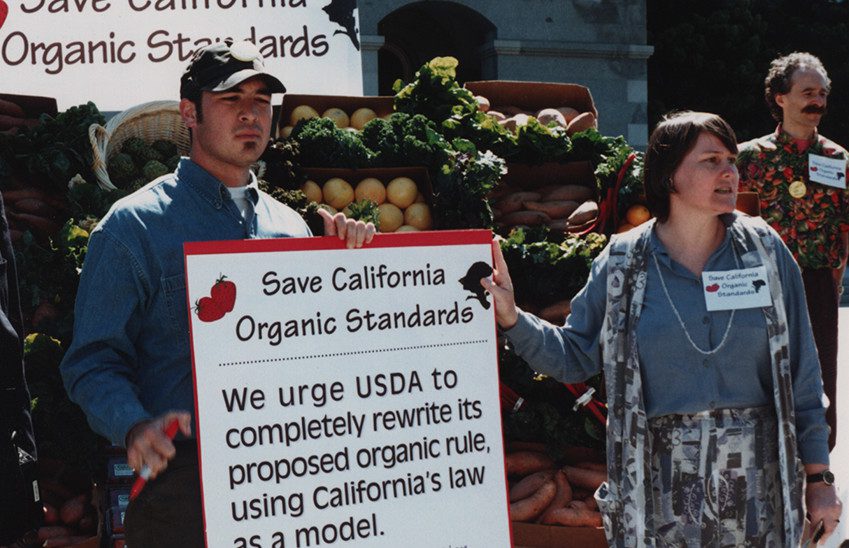
The transition from volunteer collective to organization was challenging and exciting. We learned how to fundraise to support the work, and set up systems to manage staff, volunteers and funding for our own work and also allied organizations. Our Board of Directors stepped up at every step of the way (a continuing tradition!). We learned as we went, expanding our capacities to overcome new obstacles and face changing political environments in the U.S. and other countries, always benefiting from guidance and expertise of people in the international network. It was humbling, fulfilling, and every year was different!
What achievement are you most proud of from your time at PAN?
I’m most proud of how PAN has helped expand the definition of what the food system is, and has broadened the base of people and communities working to improve it. PAN’s work on pesticides and alternatives is inherently multi-racial, crosses many issue areas, and links from local to global. Because of this approach, PAN was (and still is) a crucible that allows many people to join in a common effort without giving up their own priorities and identities. PAN has always sought to honor the reality that people on the ground know what’s going on, and can develop solutions to deal with the issues they face. Outsiders can contribute and can provide essential support, but the people on the frontlines have real power when they speak their own truth.
You directed PAN North America for 25 years. What have you been doing since leaving PAN 10 years ago? How did your work at PAN influence that work?
When I first left PAN, I had a brief stint doing policy work in Brussels. It was fascinating working on EU issues, but I realized I felt more rooted in the U.S. I then went into philanthropy, where my work has focused on emerging technologies and supporting efforts to track and influence how new technologies will grow, who controls them, and how they will be used. This core issue of controlling technology is at the root of PAN’s work as well. And I call on things I learned and experienced at PAN every day of my life, both professionally and personally, from the importance of relationships to insights on power dynamics, to the need to link together different skill sets, and the overriding importance of respect and trust.
What current PAN work or campaigns are you excited about?
I’m excited about how PAN North America is building out its work in much greater depth. I find the state-based work really exciting, and every time a specific pesticide goes down it’s a great win, like when endosulfan was banned. And now chlorpyrifos is finally on the way out (and long overdue!). All these victories matter, but of course there’s much more to be done, and I’m glad PAN continues building its capacity to take on bigger challenges.
What does your vision of a healthy, just food and farming system look like?
People’s lives and struggles are at the core, that doesn’t change. When I look at food systems, it’s very clear we’re all part of that system. It’s all of us, and the places we live, work, and raise our families. I see PAN continuing to explore and create connections through the food system to lift up this reality and give it more relevance and meaning. That’s why I’m thrilled to remain a strong PAN supporter, in whatever way I can.



